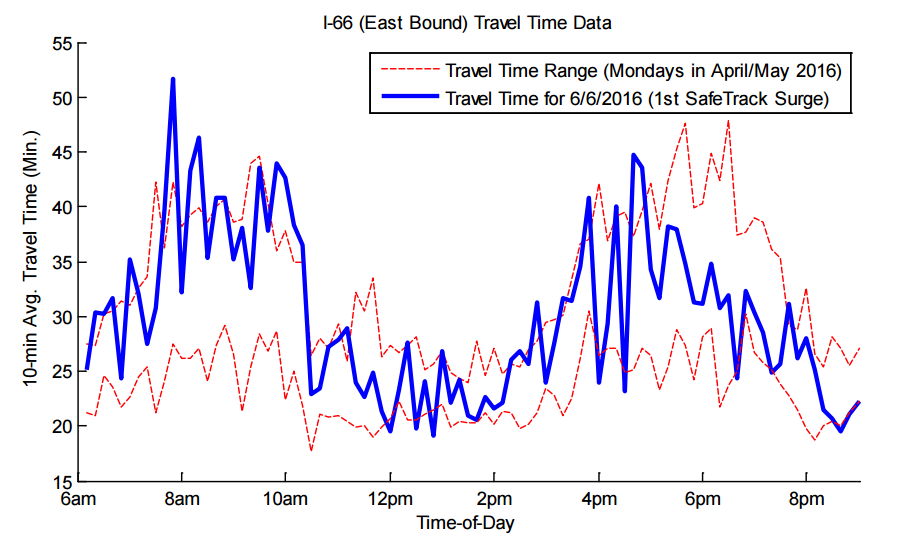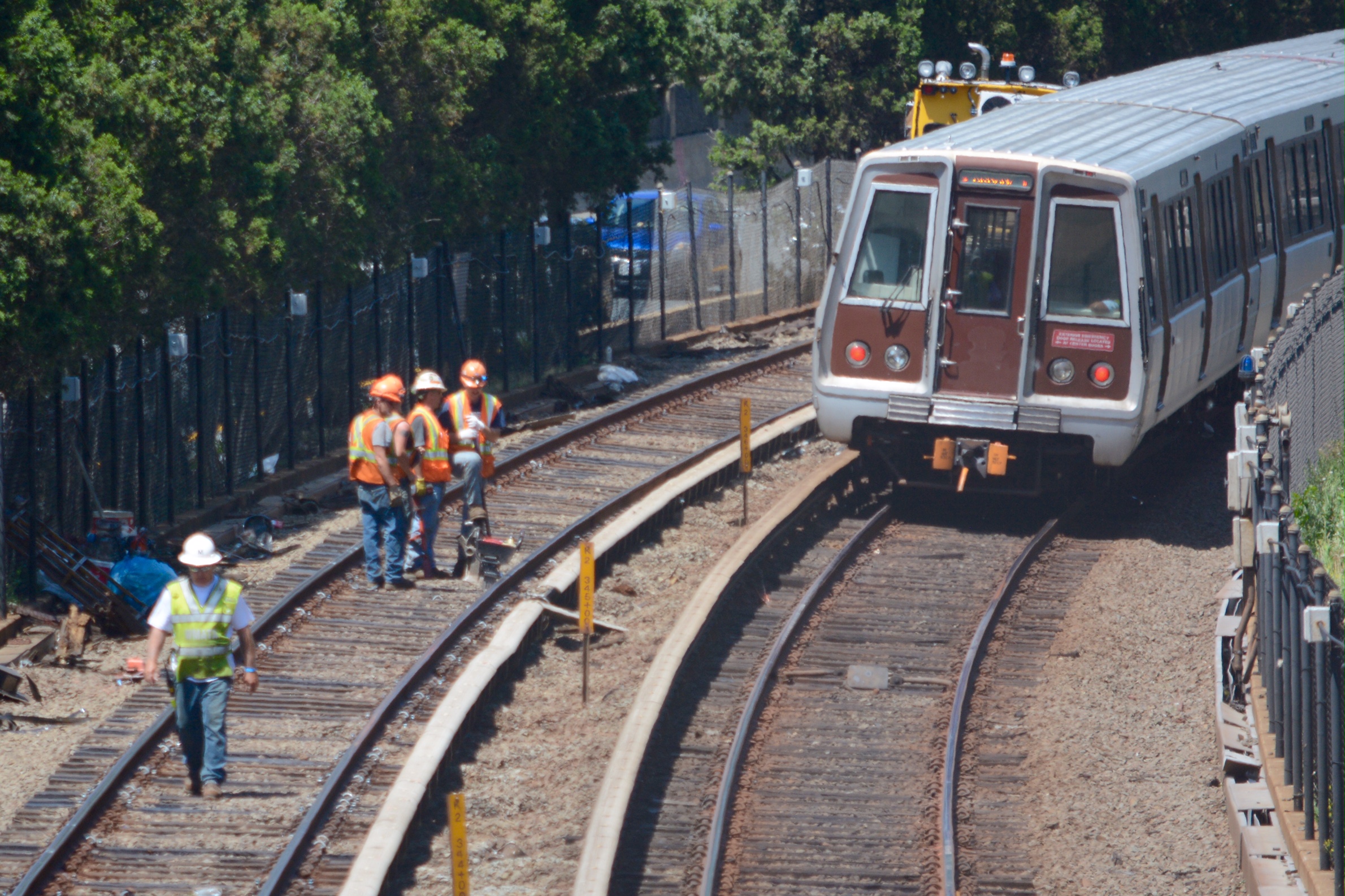WASHINGTON — As Metro’s SafeTrack program got underway, drivers experienced one of the worst Monday morning commutes of the past two months, according to data from the University of Maryland’s National Transportation Center.
Overall traffic volume Monday on Interstates 66, 395, and 495 near the Orange and Silver lines — the targets of Metrorail’s first wave of massive safety fixes — increased by 3 percent in comparison to recent Mondays during the prior two months.
Area leaders have voiced concerns that the extensive track work could cause riders to abandon transit and drive their cars instead.
That said, the report said that a small fluctuation like that is not out of the ordinary, and may not be entirely attributed to the SafeTrack surge project.
The analysis found that morning congestion on June 6 was on par with the worst congestion drivers had experienced on Mondays in April and May. While the morning congestion Monday was near the range of what is considered normal, it was on the upper end of that range.
Afternoon congestion was about average.








